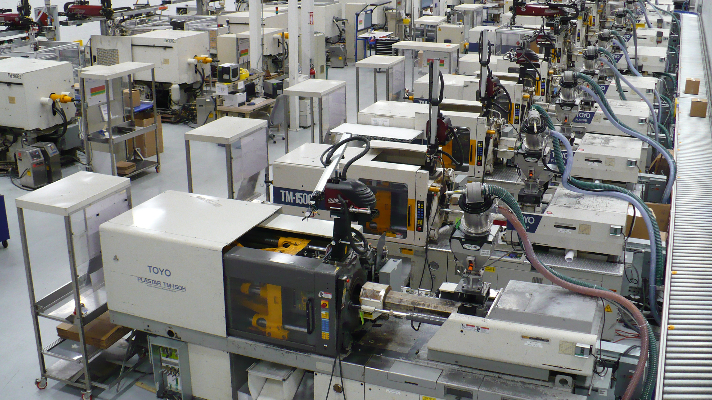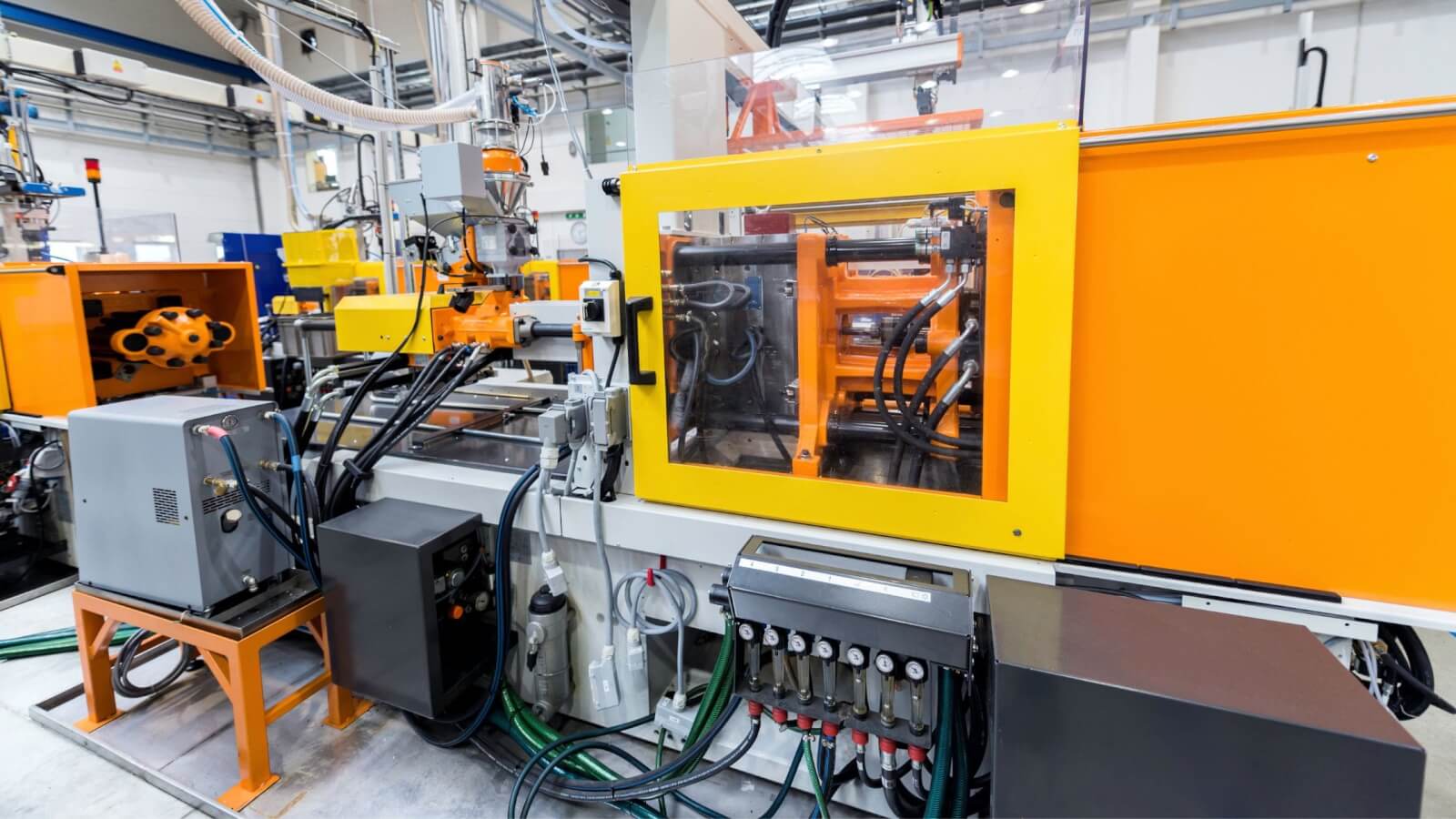The Influence of Plastic Injection Molding on Lowering Manufacturing Prices and Waste
The Influence of Plastic Injection Molding on Lowering Manufacturing Prices and Waste
Blog Article
Understanding the Fundamentals of Plastic Shot Molding Processes
Plastic injection molding serves as a cornerstone of contemporary production, providing a systematic approach to creating complicated parts with precision. Exploring these important aspects can expose exactly how even minor modifications can lead to substantial improvements in manufacturing results, increasing questions concerning the potential for technology in this well established procedure.
What Is Plastic Shot Molding?
Plastic injection molding is a widely used manufacturing procedure that transforms thermosetting and polycarbonate products right into specific and intricate forms. This method is preferred for its ability to produce high volumes of similar get rid of exceptional accuracy, making it an important approach in numerous industries, including automobile, consumer goods, and clinical devices.
The procedure involves thawing the chosen plastic product and injecting it into a mold under high stress. The mold and mildew, designed to the requirements of the preferred part, enables the molten plastic to form as it strengthens and cools down. As soon as the product has solidified, the mold is opened up, and the ended up part is ejected.
Plastic shot molding uses numerous benefits, consisting of lowered waste, uniformity in manufacturing, and the capacity to include complex styles that may be testing with various other producing approaches. In addition, it sustains a wide variety of materials, each giving one-of-a-kind buildings that can be tailored for certain applications. As industries remain to introduce, plastic shot molding continues to be at the forefront, allowing the growth of sophisticated items that fulfill developing customer demands.
The Shot Molding Process
The shot molding procedure is an advanced technique that entails several key phases to create high-quality plastic elements. Originally, plastic pellets are fed right into a heated barrel where they are merged a viscous liquid. This molten plastic is after that injected under high stress into a precision-engineered mold and mildew, which shapes the product into the preferred type.
Once the mold is loaded, the plastic is enabled to solidify and cool down, taking the shape of the mold dental caries. Air conditioning time is crucial, as it influences the cycle time and the last buildings of the shaped part. After adequate air conditioning, the mold opens up, and the completed component is ejected utilizing ejector pins.

Materials Made Use Of in Shot Molding
Different materials can be used in the injection molding procedure, each offering distinct homes that deal with details applications. One of the most commonly used materials include thermoplastics, thermosetting plastics, and elastomers.

Thermosetting plastics, like epoxy and phenolic materials, undergo a chemical modification throughout the treating procedure, leading to a stiff, stringent framework. These products are perfect for applications calling for high heat resistance and architectural integrity, often used in electric insulators and automotive parts.
Elastomers, consisting of silicone and rubber-based materials, offer adaptability and strength. Their unique buildings make them ideal for applications that require elasticity, such as seals and gaskets.
Additionally, specialized products like bio-based plastics and compounds are acquiring grip for their environmental advantages and improved efficiency attributes, broadening the extent of injection molding applications in various markets. Understanding the homes of these materials is important for picking the suitable kind for details projects.
Benefits of Injection Molding
Injection molding attracts attention as a highly efficient manufacturing process that uses countless benefits for producing complicated get rid of accuracy. Among the most substantial advantages is the straight from the source capability to develop elaborate styles that would certainly be impossible or difficult to attain with other approaches (Plastic Injection Molding). The process enables for limited tolerances and detailed features, making sure premium components
Additionally, shot molding is understood for its fast manufacturing abilities, making it a perfect selection for high-volume manufacturing. Once the mold and mildew is produced, components can be produced swiftly, lowering preparations and enhancing overall productivity. This efficiency not just reduces manufacturing prices however additionally gives an one-upmanship on the market.
The flexibility of materials used in injection molding even more boosts its appeal. A variety of thermoplastics and thermosetting polymers can be used, enabling producers to pick products that ideal meet their particular needs, including heat, adaptability, and stamina resistance.
Moreover, the procedure decreases waste, as excess material can commonly be recycled and recycled. This sustainability facet adds to a reduced ecological influence, making shot molding an accountable production option. Generally, the benefits of shot molding make it a favored technique for many industries.
Factors Affecting Item Quality
While many aspects can affect product high quality in shot molding, comprehending these components is critical for attaining optimum results. Trick facets include material option, refining specifications, and mold and mildew layout.
Material selection plays an essential role, as various polymers show distinct buildings that impact flowability, stamina, and thermal security. Poor product selection can lead to problems such as warping or insufficient filling.
Handling specifications, including pressure, cycle, and temperature level time, should be carefully regulated. Variants in these setups can lead to disparities partly measurements and surface coating. Exceedingly high temperatures might cause deterioration of the polymer, while poor stress can result in brief shots.
Mold style is equally essential, as it figures out the flow of the molten plastic and the cooling process. Inadequately created mold and mildews might cause irregular air conditioning prices, resulting in dimensional errors and recurring anxieties.

Verdict
Finally, plastic injection molding why not look here acts as an essential production procedure that makes it possible for the effective production of top notch parts. Mastery of the injection molding process, including the understanding of products and the influence of different elements on item high quality, is crucial for attaining ideal results. The benefits of this approach, such as cost-effectiveness and layout flexibility, more emphasize its significance across several markets, strengthening its condition as a recommended option for high-volume production.
Plastic injection molding serves as a foundation of contemporary production, supplying a systematic method to generating intricate elements with precision.Plastic shot molding offers numerous benefits, consisting of reduced waste, consistency in production, and the capability to include complex layouts that may be challenging with various other producing methods (Plastic Injection Molding). As sectors proceed to innovate, plastic shot molding remains find more information at the leading edge, enabling the growth of advanced products that meet progressing customer needs
The injection molding process is an advanced strategy that involves a number of key stages to generate high-grade plastic components.In conclusion, plastic injection molding offers as a vital production procedure that makes it possible for the reliable manufacturing of high-grade elements.
Report this page